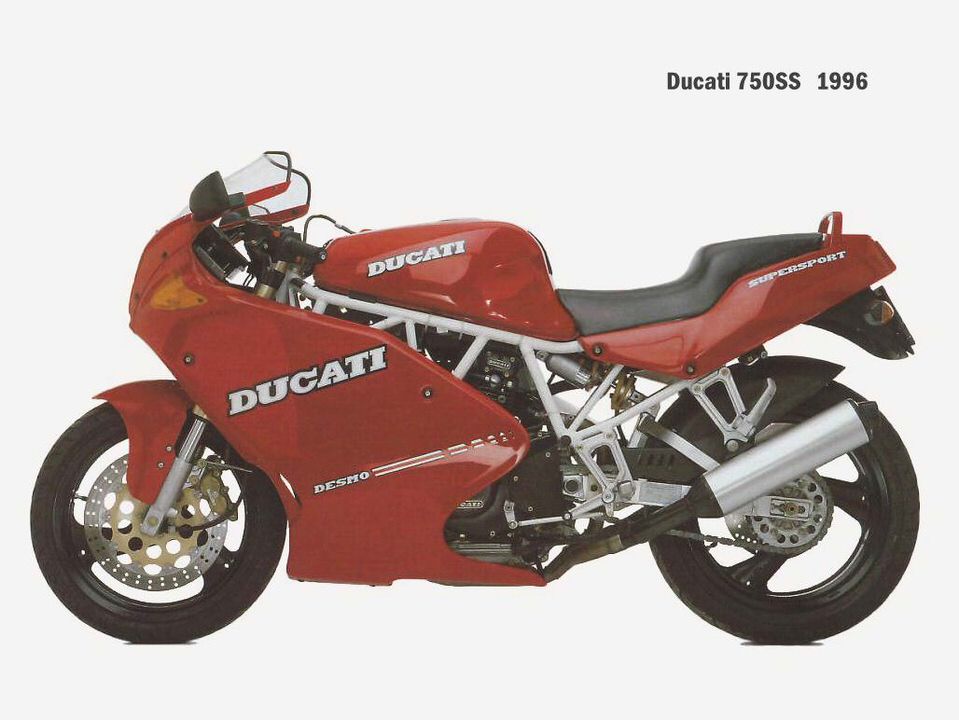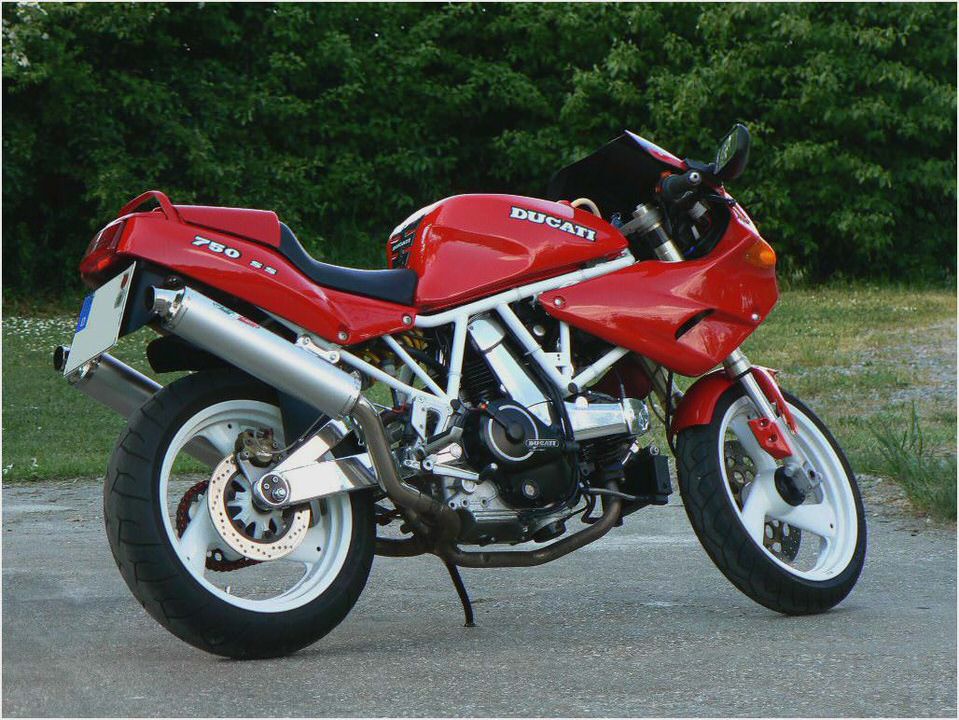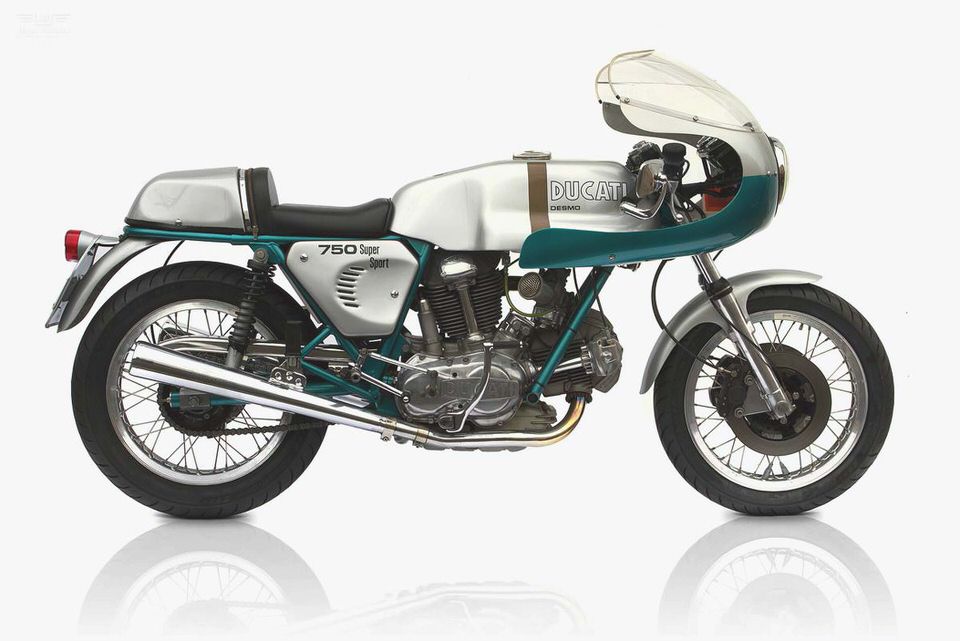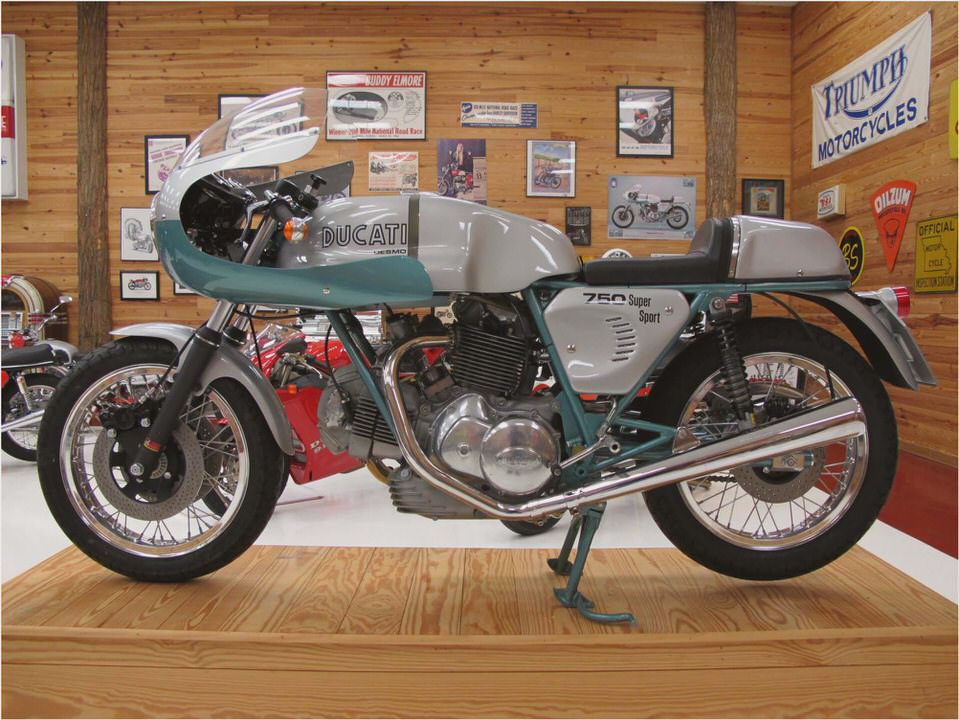
DUCATI 750 SS
Article #5, 9 April 2011 by Hans Smid
It is April 23 1972. About 70.000 spectators are looking down from the stands to the factory racing teams of MV Agusta, Norton and Honda. The Ducati team had to fight an uneven battle against the world’s best riders like Read, Cooper and Agostini…
Where other riders had immense financial and material support, the Ducati racing team had to make do with very little training experience, on almost untuned and unmodified standard racers with frames that were picked straight from the production-line. Even the centre stand mountings were still visible. All eyes were fixed on the riders, concentrated and ready to go…
As expected Giacomo Agostini took lead. But after four laps the Ducati fans got outrageous the moment Paul Smarts number 16 overtook the favourite. Disillusion among the competition became even bigger when teammate Bruno Spaggiari with number 9 showed the backside of the high swept Conti’s to Agostini and his fellow-rivals.
The Ducati crew went mad. The final battle, much unexpected, was between Bruno Spaggiari and Paul Smart . who fought for five rounds in what was to become a murder between two brothers.
Actually it was Spaggiari . who was in lead in the final round! Unfortunately he suffered from air bubbles in his fuel system. The restrained engine and a too widely taken curve gave Paul the opportunity to overtake Bruno ‘s desmo in one of the last curves on the circuit.
It would bring him eternal fame and immortality. Some think it is a pity Spaggiari didn’t see the black white finish flag first; he would have deserved it with his impressing career as a Ducati test rider.
The double Imola victory in 1972 was beyond anyone’s expectation and very important to Ducati. One might even doubt if the name Ducati would still have been on the tank of present Italian stallions without this legendary win. Truth is that after Daytona the 750 SS was designed perfectly for the Imola circuit by Taglioni . Related to the powerful Japanese four cylinders the 10hp lower engine performance was of minor importance thanks to the fantastic handling of the machine.
This doesn’t make this victory less heroic; racing is not just a matter of supreme horsepower, it’s the perfect balance between man and machine in the most literal way.
As always Fabio Taglioni had made a perfect study of the circumstances, without mathematical calculations, long term research or high prototype costs. The little man was great in his intuitive way of acting that proved to be close to perfection afterwards. While Smart and Spaggiari were fighting marvellous riders, Taglioni stood all alone against huge research teams, divided in sub teams, who could afford the luxury of studying one specific problem or detail.
Especially the Japanese had a mathematical way of dealing with problems; they tried ten different things, kept the best result and threw the nine remaining on the junkyard.
The poor Ducati factory couldn’t afford this kind of research. Smart and Spaggiari wrote history by winning Imola . but Fabio Taglioni was the modest inventor, who had managed to create the impossible. The name Ducati was taken seriously from now on in the higher class after their sweet little singles. And it wouldn’t be the last time, they would be heard from in the superbike-top.
Names like Hailwood and Fogarty would have their influence on sales numbers. But that’s another story.
The success on the Imola track inspired the Ducati management to the production of a real street-legal 750 desmo replica to commemorate this great victory. The 1974 750 Super Sport became a true race replica and was the most exotic motorcycle of its day. It was produced out of Ducati’s race shop in small number (401 to be exact), all hand build.
The crankcases were taken from the standard 750 Sport but had the possibility to add an oil cooler. The crankshaft is modelled after the original race bike that won Imola, and is strengthened around the big-end. Dell’Orto 40mm carburetors were fitted, but the most exclusive parts were in the cylinder head.
The 750 Super Sport was the first (and only ‘round case’) road legal L-twin Ducati to feature desmodromic camshafts, in this case even with highly polished rockers. Power output was increased to 70 bhp at 9,000 rpm.
The azurro metallizato Green Frame that was fitted around the characteristic and impressive engine was in perfect harmony with the silver-grey top half, tank, saddle body and covers. Beyond engineering, into art . Dave Minton wrote in March 1976 in Motor Cyclist Illustrated. A machine built for men; there was no room for your girlfriend on the seat anyway!
The frame was taken from the 1973/’74 750 Sport (the narrow one), but was fitted the centre axle 38mm Marzocchi front fork. The Ducati 750 Super Sport was the first street bike with three disc brakes; two Scarab discs at the front and a single Lockheed at the rear. The fibreglass tank featured a racing style ‘looking glass’ fuel gauge stripe.
The 1974 750 SS . also known as the ‘ Green Frame ’ is a very rare and valuable collector’s item nowadays. It was a striking racer with beautiful details, like the transparent looking-glass in the fibreglass tank. It is arguably the most desirable Ducati’s of all time.
1974 was the last official production year of the ‘ round case ’ 750 L-twin engine, a common name given to this engine type to distinguish it from the later ‘ square case ’ design, first introduced on the 860 GT in 1974 also. In 1975 Ducati introduced a new Super Sport range in 750 and 900 cc versions, based on the new ‘square case’ engine. Where the 1974 750 SS was a limited production race replica, the 1975 750 SS was a standard road bike in production until 1978.
The ’75 Ducati 750 SS used the same frame as the earlier 750 SS and shared its bodywork and chassis with the 900 SS of the same year. The only difference (apart from engine displacement of course) between the two is the colours of the fairing: where the 750 SS has a silver fairing with a blue stripe, the 900 SS has a blue fairing with a silver stripe. The Marzocchi 38mm front fork was retained but now fitted with a Brembo brake system.
The new ‘square case’ 860 engine was taken as a basis but the desmodromic cylinder head was retained as well as the 40mm Dell’Orto’s and Conti exhaust mufflers. The ’75 750 SS still had right side gear-shift and no provisions for the mounting of indicator lights. Together with the Conti mufflers, this made the ’75 750 Super Sport an uncompromised motorcycle, only barely road legal.

Only a 249 750 SS’s were produced in 1975.
It was clear for obvious reasons that Ducati had to ‘soften’ the concept in 1976. To comply with US regulations, the ’76 and ‘77 750 SS models got Lafranconi mufflers, air filters and left side gear-shift by adding a crossover rod and different foot pegs. The fuel tank was that of the previous 750 Sport and was made from steel rather than fibreglass.
In 1978 the Super Sport range got an engine update based on the new Darmah . It got a new crankshaft assembly, new Bosch ignition and gear selector drum on the left side; a big improvement over the crossover rod. It also was the final production year for the 750 SS and it received new Brembo ‘Goldline’ 08 brakes callipers.
Over its lifetime, only a few ‘ square case ’ 750 Super Sports were produced, as the price was too close to that of the 900 Super Sport with which it shared most of its specifications. The limited numbers makes the 750 SS very rare and much sought after.
The Green Frame / ‘round case’ 750 Super Sport of 1974 had a hand build version of the 750 Sport engine with vertically split aluminium crankcases, a 90 degree L-twin layout with the vertical cylinder inclined at 15 degrees upwards. The five-speed gearbox is incorporated in the engine crankcase and all ’74 750 Super Sports have a right side gearshift. The valves are actuated by single overhead camshafts driven by a set of bevel gears and uses desmodromic polished valve rockers.
The ‘square case’ 750 SS engine of ’75 – ‘78 is, like all ‘square case’ Ducati’s, based on the L-Twin of the 860 GT of 1974. Although technically based on the 750 ‘round case’ L-twin, this engine had a lot of improvements for faster and simpler assembly. The outer engine cases were designed by Giorgetto Guigiaro of Studio Italdesign.
The desmodromic cylinder heads of the ’74 model was retained as well as the 40mm Dell’Orto PHM carburetors. The 1978 750 Super Sport has an updated crankshaft and Bosch ignition.
The frame for all 750 Super Sport models is based on that of the 1973 750 Sport with the ‘narrow’ rear sub frame. The 1974 and 1975 have virtually the same frame as on both these models the gear shift is on the right side. With the introduction of left side gear shift in 1976 came revised foot pegs and different positioning of the rear brake pump.
The 750 Super Sport is fitted with a 38mm centre axle Marzocchi front fork. Only the ’74 Green Frame ‘round case’ has Scarab front and Lockheed rear brakes, all models afterward had Brembo brakes. The final 1978 model had Brembo ‘Goldline’ 08 callipers. The ’74 and ’75 models had a fibreglass fuel tank, replaced by a steel fuel tank (the same as the 750 Sport ) in 1976.
All 750 Super Sport were fitted with Borrani aluminium wheels.
References (recommended further reading)
Falloon, Ian (2006) ‘The Ducati 750 Bible ’, Dorchester; Veloce Publishing




- Ducati Sportclassic Parts & Accessories – webBikeWorld
- Ducati Streetfighter 848: Track review – Road Tests: First Rides – Visordown
- 1977 Ducati 500 GTL Cafe Racer – Page 3
- BikeBoy.org – Ducati 851 SP3
- Ducati Nerima – Streetfighter S il Ducatista

